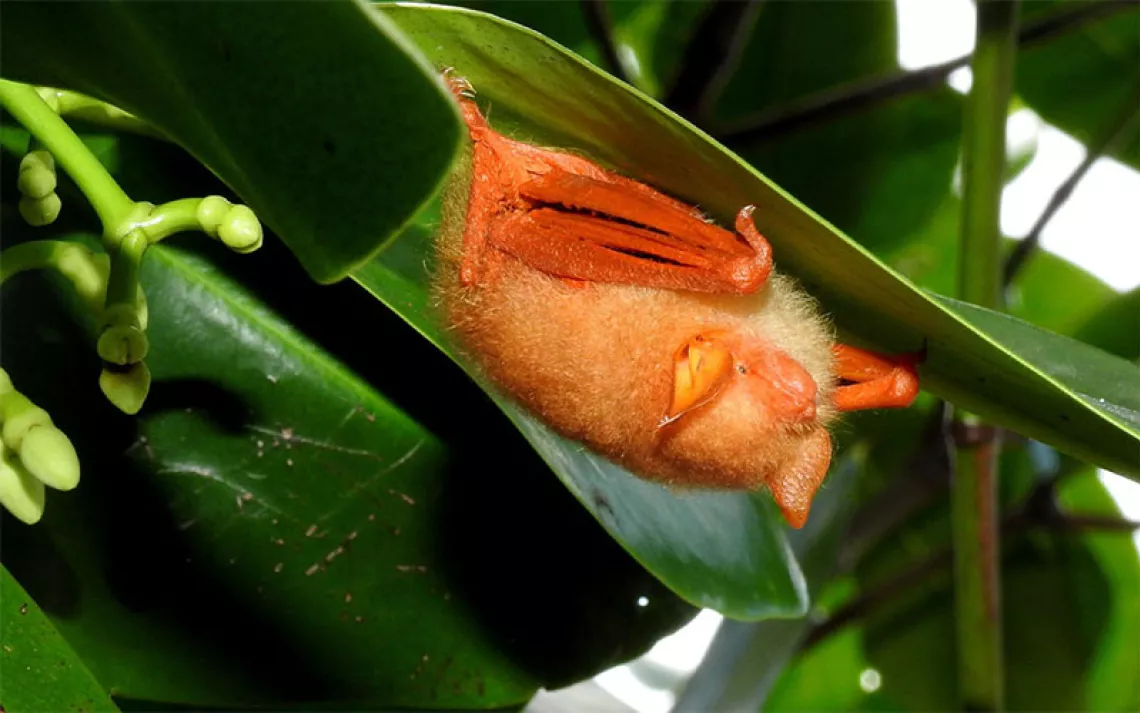Africa Chimp, Gorilla Populations Improve But Are Still Endangered
Study shows 80 percent of the animals live outside reserves and are threatened

Photo courtesy of Zanne Labuschagne/WCS
Between 2003 and 2013, field surveyors stomped 5,400 miles through the jungles of western Equatorial Africa, an area west of the Congo River roughly the size of Washington State. What they found, while covering a distance equivalent to walking from New York City to London, is some rare good news: The population of western lowland gorillas is about 360,000, or one-third higher than previous estimates. Central chimpanzees number about 130,000, one-tenth higher than expected.
But the data in the journal Science Advances also shows reason for concern—gorillas in the survey areas declined by 2.7 percent annually, meaning their populations aren’t secure. “It’s great news that the forests of western Equatorial Africa still contain hundreds of thousands of gorillas and chimpanzees, but we’re also concerned that so many of these primates are outside of protected areas and vulnerable to poachers, disease, and habitat degradation and loss,” lead author Samantha Strindberg of the Wildlife Conservation Society (WCS) says in a statement. “These findings can help inform national and regional management strategies that safeguard the remaining habitat, increase anti-poaching efforts, and curtail the effects of development on great apes and other wildlife.”
Collecting the data was a monumental task. According to Fiona Maisels of the WCS and University of Stirling in Scotland, the WCS was placed in charge of a project in 2002 to monitor forest elephants and great apes at seven sites in five West African countries, including the Republic of Congo, Central African Republic, Gabon, Cameroon, and Equatorial Guinea. Through the following decade, monitors from the organization and other conservation groups collected sightings and signs of gorillas and chimps, as well as signs of human encroachment into their habitat. In total, 61,000 days' worth of survey data was collected.
While all that effort turned up more primates than expected, it also elucidated the human threat. The researchers found that in protected areas with wildlife guards to keep out poachers, the apes thrived. Areas where illegal logging was excluded also did better. But the researchers point out that most of the animals, about 80 percent, live outside formally protected reserves.
More and more, road networks are penetrating areas that were once inaccessible to wildcat loggers and poachers. In the past, a hunter or poacher had to follow elephant trails into the forest and could only kill what they could carry out on their backs. Now, a single hunter with a pickup truck can drive on roads deep into the forest, fill up a truck bed, and bring it to a bushmeat market, the authors explain.

Photo courtesy of Emma Stokes/WCS
Another factor is the emergence and spread of Ebola in the region. According to estimates, Ebola has killed 90 percent of great apes in West Africa across one-sixth of their range. “It is indeed the same strain: Ebola Zaire [that infects humans]. All human outbreaks in the region have been traced back to someone finding a dead animal in the forest and taking it home to eat,” Maisels says. “At present nothing can be done, although there have been discussions on the possibilities of safe great ape vaccination.”
But the biggest threat is simply land-use changes—demand for timber in the region and the conversion of wild land into industrial agriculture like palm-oil plantations is slowly diminishing habitat for the apes and many other species. The way to safeguard the apes is to add more protected land to the region and help local people, governments, and industries manage nonprotected land in a more sustainable way.
Maisels says that there is much work to be done. All of the nations in the survey region list chimps and gorillas as completely protected species, and all have signed the International Gorilla Agreement, a legally binding framework designed to protect and restore gorilla populations. Gabon is developing a new National Land Use Plan that places conservation at its core. And several nations have developed new protected areas in the last decade primarily to protect great apes, including in Cameroon’s Takamanda National Park and the Ntokou-Pikounda National Park in the Republic of Congo, which is also working on a trans-boundary park with Gabon.
But it will take more than setting aside tracts of land to stem the loss of great apes. Nations in the Congo basin need the political will and cooperation of the international community to enforce anti-poaching promises and to secure their forests, the authors say. If that doesn’t happen, the population of great apes in the region could be cut in half by 2040, and 20 years after that they may not be there at all.
 The Magazine of The Sierra Club
The Magazine of The Sierra Club



